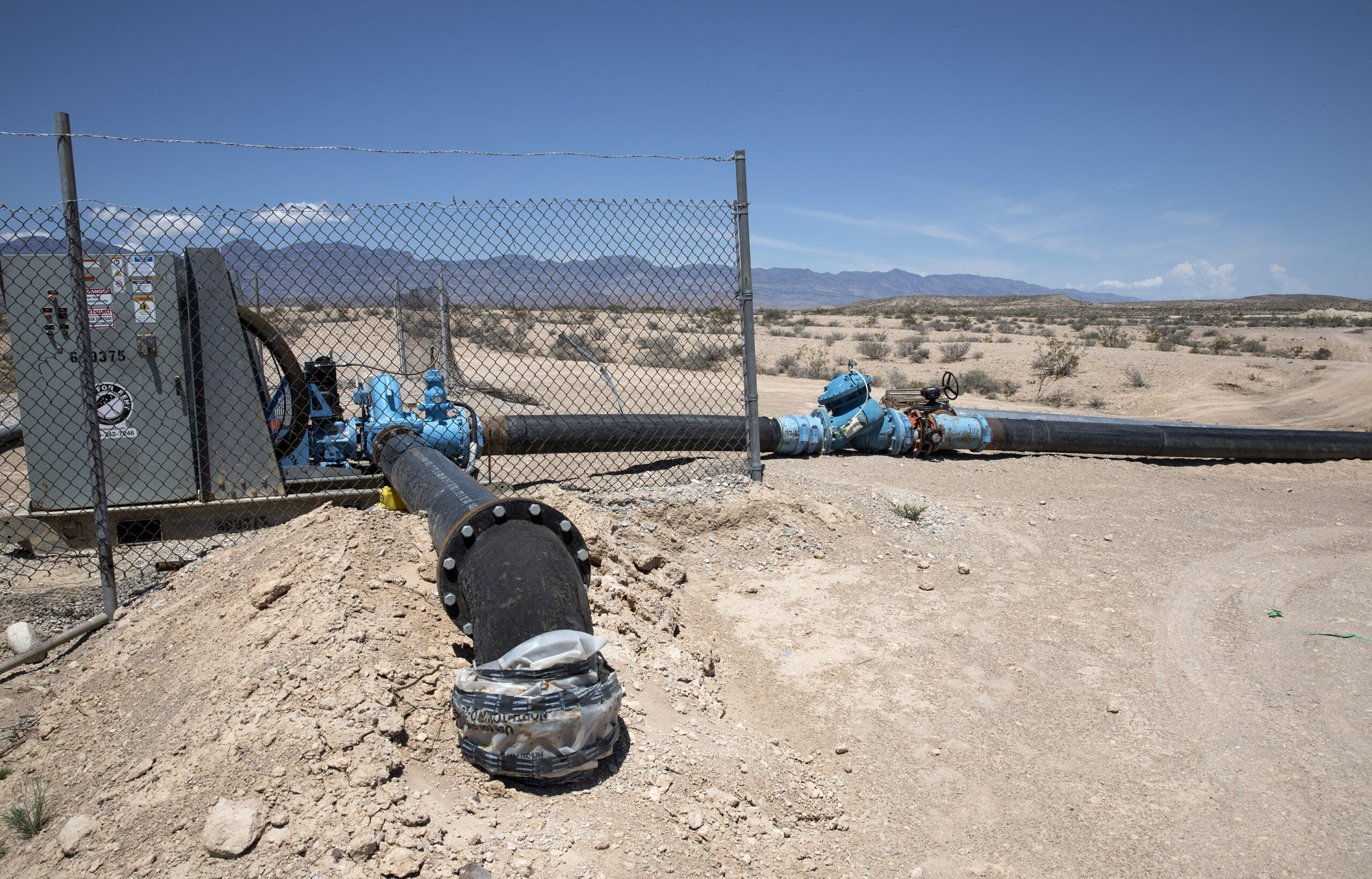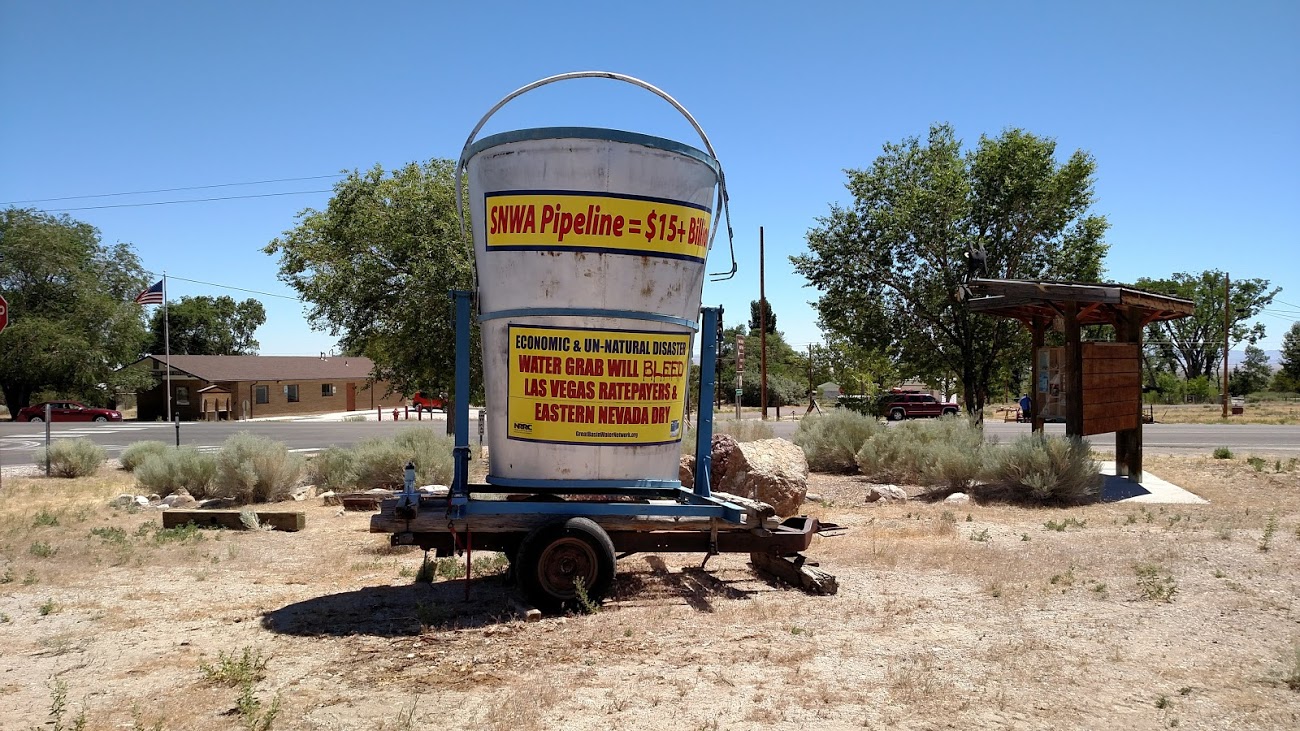Opponents, legislators raise questions that bills could enable Las Vegas pipeline, depart from Western water law

An Assembly committee heard two water bills Wednesday amid criticism from a varied group of water users who worry that the legislation could undermine the historic application of Western water law and enable large-scale projects, including the controversial Las Vegas pipeline.
The Southern Nevada Water Authority, which is pushing the project, testified neutral on the bill.
The legislative package was proposed at the end of Gov. Brian Sandoval’s administration by then-state engineer Jason King. In an interview with The Nevada Independent, King argued that the bills would bring more flexibility to Nevada water law. The legislation, he said, would help the state better manage water claims and resolve conflicts between users.
Tim Wilson, the acting state engineer who took over when King retired in January, said that the bills, taken together, would bring “needed consistency and clarity” to Nevada water law.
“These bills are the division’s best efforts to address real challenges and issues that the division grapples with regularly in all parts of the state,” Wilson said in his opening testimony.
But opponents cast the bills as a giveaway to big developers and water users with a lower priority to water. A motley coalition of irrigators, environmentalists, tribes and rural officials directed much of their ire toward Assembly Bill 30, which would codify the state engineer’s ability to approve complex mitigation plans, known as 3M plans, in resolving conflicts between water users. Several critics tied the legislation to the Southern Nevada Water Authority’s proposed project to pump water from Eastern Nevada to Las Vegas, a plan that uses 3M for mitigation.
Opponents included the Great Basin Water Network, the Center for Biological Diversity, the Nevada Farm Bureau, the Confederated Tribes of Goshute, the Central Nevada Regional Water Authority, the Humboldt River Basin Water Authority, the Sierra Club and the Nature Conservancy. Several legislators also expressed some concerns about the bill.

Assemblywoman Shannon Bilbray-Axelrod, who represents Las Vegas, went so far as to ask Wilson if the water authority had any role in crafting the bill.
“Quite bluntly, absolutely not,” Wilson said. “They did not offer us any language.”
Assemblywoman Sarah Peters, an environmental consultant who represents Reno, said that she had “concerns” that the bill did not adequately address environmental concerns.
Others worried it would give the state engineer too much authority.
Minority Leader Jim Wheeler worried the bill would let the state engineer “have unlimited power to give water and take water away from someone regardless of right in the end. I'm not saying you would do that. What I'm saying is this particular bill does give you that power."
Despite having working on a 3M bill in 2017, the water authority testified neutral. The water authority’s lobbyist, Andy Belanger, said the water authority’s focus this year is on completing a worst-case-scenario pump station at Lake Mead, a Westwide drought plan for the Colorado River and conservation. But he said that the Legislature should take action on water law in the future to avoid litigation, as costs for defending lawsuits has increased for the state.
“We can’t support the bill in its current form,” Belanger said. “We don’t oppose the bill in its current form. But we do believe that if the Legislature does not act, at some point in the future you are going to spend a lot more money in the courts than you are today.”
Under Western water law, those with the oldest claims to water — senior rights holders — have the first opportunity to use water in times of scarcity. Any water users with later claims — those with junior rights — are the first to get their water curtailed off if there’s not enough to go around.
The tension between the two groups is a factor in most conflicts over water in Nevada and across the West. When water users apply for permission to pump groundwater, a user with senior rights can protest the application if there is a concern that issuing a permit would pose a conflict. For instance, if a mine applied to pump groundwater but there was a possibility it could draw down a spring, a rancher with senior rights to the spring could protest the application.
If there is a conflict, Nevada statutes are typically read as prohibiting the state engineer from approving an application, even if there is water available to appropriate from an aquifer. But Nevada’s top water regulator has, in many cases, allowed for applications to proceed with mitigation. In one case, the state has approved a 3M plan for mining project in Kobeh Valley.
Under a 3M plan, which stands for monitoring, management and mitigation, a water user could resolve a conflict by providing substitute water.
Although current statutes mention 3M plans, there remains uncertainty about the extent to which they can be used. In the case of the rancher’s spring, the water user could pump or truck in replacement water to ensure that the spring remained filled with water. The Supreme Court, in the Kobeh Valley case, did not say whether 3M plans were permissible but questioned the reliability of the concept — if pipes freeze in the winter — and the quality of replacement water.
Despite the criticism, the state said the legislation, codifying the use of 3M plans to resolve disputes between water users, was necessary to clear up conflicting language in the state’s water statutes.
“Without it, we are left with two conflicting directions in our statute,” said Brad Crowell, who leads the Department of Conservation and Natural Resources. “No matter which one we follow, we end up in court over our decision. I personally don’t think we should be abdicating the decisions on water policy to the court… As the law stands now, there is the inevitability of litigation.”
Wilson also rejected the rhetoric “villainizing” the bills for enabling large-scale water projects and favoring developers who can afford to pay for mitigation.
“While the terms mitigation and 3M plans have been somewhat villainized due to conflict over a particular groundwater development project, the fact is that current law authorizes the state engineer to resolve a conflict based on the principle that any impacted senior water rights holders are made whole and the overall public interest remains balanced,” he said.
The issue of senior rights is at the heart of the second bill that the Assembly Committee on Natural Resources, Agriculture and Mining heard Wednesday evening. Assembly Bill 51 would give state regulators the authority to adopt regulations and levy some special assessments to “conjunctively” manage rivers and aquifers as a connected resource.
Although the law used to treat each supply as separate, the best science shows that diversions from streams affect groundwater levels and vice versa. Despite some progress in the last session, the state engineer argued the law is still vague on how regulators should enact “conjunctive management” plans.

AB 51 would help fix that problem, state regulators said. It could also be used by state officials to finalize regulations to mitigate the impacts of groundwater pumping near the Humboldt River. Pumping has led to a loss in streamflow that has, in turn, affected water deliveries to senior users at the end of the river.
But the proposed fix also drew opposition from several groups, including the Nevada Farm Bureau, the Pyramid Lake Paiute Tribe, Douglas County, Storey County and the Pershing County Water Conservation District (PCWCD), which represents farmers with rights going back to the 1860s.
Although many opponents support “conjunctive management” in theory, they feared that the legislation, as written, would give the state engineer more power and could strip away the ability of senior rights holders to exercise their claims. They worry mitigation programs, funded through a potential special assessment, could leave senior rights holders with money but no water.
“PCWCD constituents don’t want money, they want their water,” said Bennie Hodges, who runs the Pershing County district, which sued the regulators in 2015 to halt groundwater pumping.
Prior to the hearings, Crowell said the state faced three realities as it related to water. Crowell, who also worked for Sandoval, said because Nevada is the most arid state, the fastest-growing state and threatened by climate change, lawmakers should take a “proactive approach.”
“Climate change is real,” he said. “The impacts are being felt here in Nevada. And it is our responsibility to take the impacts into account in managing Nevada’s water resources.”
